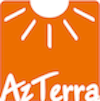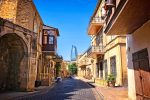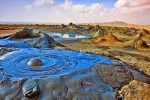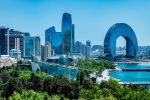Day 1:
Arrival in Baku
Arrival at the airport. Private transfer to the hotel. Check-in (from 14:00). Free time. Overnight in Baku.
Day 2:
Old City & Central Baku + Panoramic City Tour
09:30 – pick-up from the hotel.
Old City (Icherisheher) Walking Tour
Begin your day in the historical heart of Baku — a UNESCO-listed open-air museum filled with centuries-old architecture and narrow medieval streets.
You will see:
Central Baku Walking Route
After exploring the Old City, continue your tour through the vibrant center of the capital:
This part of the tour blends modern city life with beautiful early-20th-century architecture.
Panoramic City Tour (by vehicle + short walks)
Discover the modern face of Baku and its iconic landmarks:
-
The First Oil Well (historical landmark)
-
Aquatic Palace (drive-by)
-
Baku Boulevard
-
Government House
-
White City district
-
Little Venice
-
Carpet Museum
-
Flame Towers
-
Highland Park – the best panoramic view of Baku Bay
Heydar Aliyev Center (option to visit inside)
One of the most recognizable architectural masterpieces of the 21st century, designed by Zaha Hadid.
Inside, visitors can enjoy:
-
museum exhibitions
-
cultural displays
-
photo areas
Entrance is optional and can be added upon request.
Return to the hotel. Overnight in Baku.
Day 3: Gobustan, Mud Volcanoes & Absheron Peninsula
09:30 – pick-up from the hotel.
Gobustan National Park (UNESCO)
-
Ancient rock carvings (petroglyphs)
-
Prehistoric human settlements
-
Panoramic views of the Caspian Sea
Mud Volcanoes
Bibi-Heybat Mosque
Ateshgah Fire Temple
- Ancient Zoroastrian fire-worshippers’ sanctuary
- Once a pilgrimage stop along the historic Silk Road
Yanardag (Burning Mountain)
- Natural gas hillside burning for centuries
- One of the most iconic “Land of Fire” attractions
Return to Baku in the early evening (around 18:00–19:00).
Overnight in Baku.
Day 4: Baku → Shamakhi → Lahij → Gabala → Sheki
Start at 08:00 after breakfast.
Leave Baku and head west toward the Greater Caucasus Mountains. Watch the scenery transform as dry plains give way to green hills and the first mountain slopes.
If you wish, you may stop in Maraza to see the Diri Baba Mausoleum — a unique 14th-century monument carved into the cliff. This visit is optional.
Continue to Shamakhi, the former capital of the Shirvanshahs, where you’ll visit the historic Juma Mosque, one of the oldest in the Caucasus.
From Shamakhi, drive into the mountains to reach Lahij, a beautiful highland village famous for its cobblestone streets, copper workshops, and centuries-old water supply system. Walk through its charming alleys, meet local artisans, and experience the authentic spirit of mountain life.
Afterward, continue toward Gabala, making a stop at Nohur Lake, surrounded by pine forests and mountain peaks — a peaceful place to relax and take photos.
If time permits, you may also visit the Tufandag Cable Car to enjoy panoramic mountain views (optional).
Visit the village of Nij, home to the Udi people, descendants of the ancient Caucasian Albanians. Explore the restored Udi Church, one of the few surviving Albanian Christian temples in the region.
Arrive in Sheki in the evening (around 19:00–20:00). Overnight in Sheki.
Day 5:
Sheki & Kish → Baku
Breakfast at the hotel.
Explore Sheki, a UNESCO World Heritage Site known for its rich history and traditional architecture.
Visit the magnificent Sheki Khan’s Palace (18th century), famous for its hand-painted murals and stunning shebeke stained-glass windows. See the Caravanserai, Juma Mosque, and walk through Yukhary Bash (Old Town) — a well-preserved area that still reflects the charm of the Silk Road era.
Then continue to Kish Village to visit the Albanian Church of Saint Eliseus, dating back to the 10th–12th centuries — one of the oldest Christian temples in the Caucasus.
Enjoy a taste of local Sheki cuisine, including the traditional piti stew and the region’s famous Sheki baklava.
Return to Baku in the afternoon (approx. 4–5 hours).
Depart Sheki around 15:00 and arrive in Baku in the early evening (approximately 19:00). Overnight in Baku.
Day 6: Departure
Breakfast at the hotel and check-out by 12:00.
Private transfer to the airport for your departure.
End of tour — leaving you with unforgettable impressions of Azerbaijan’s beauty and hospitality.

 English
English
































